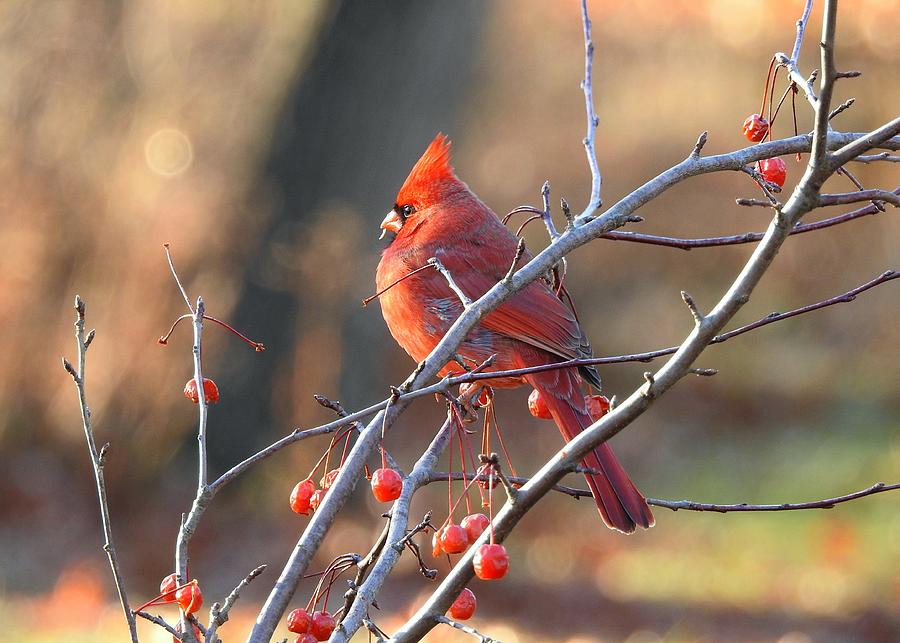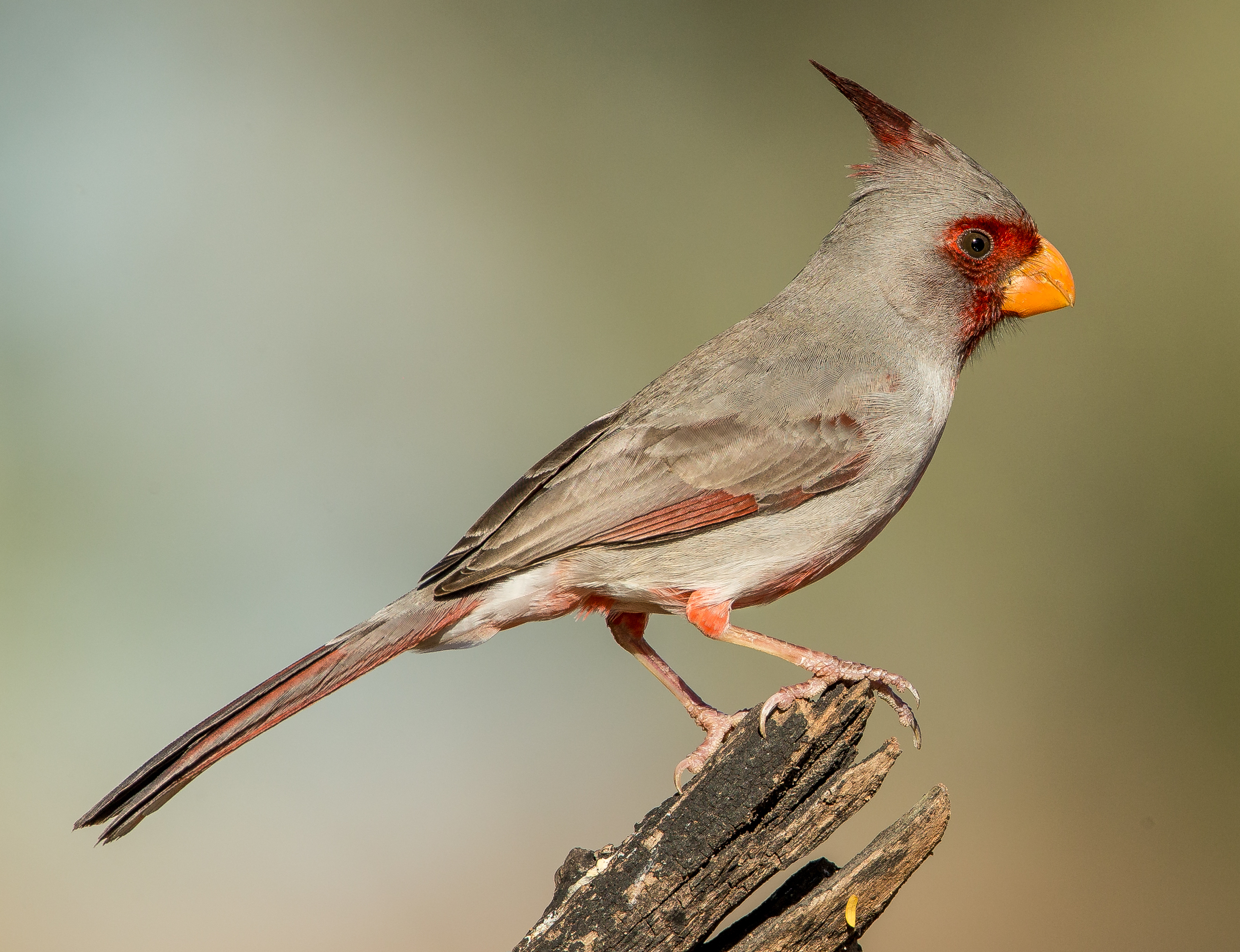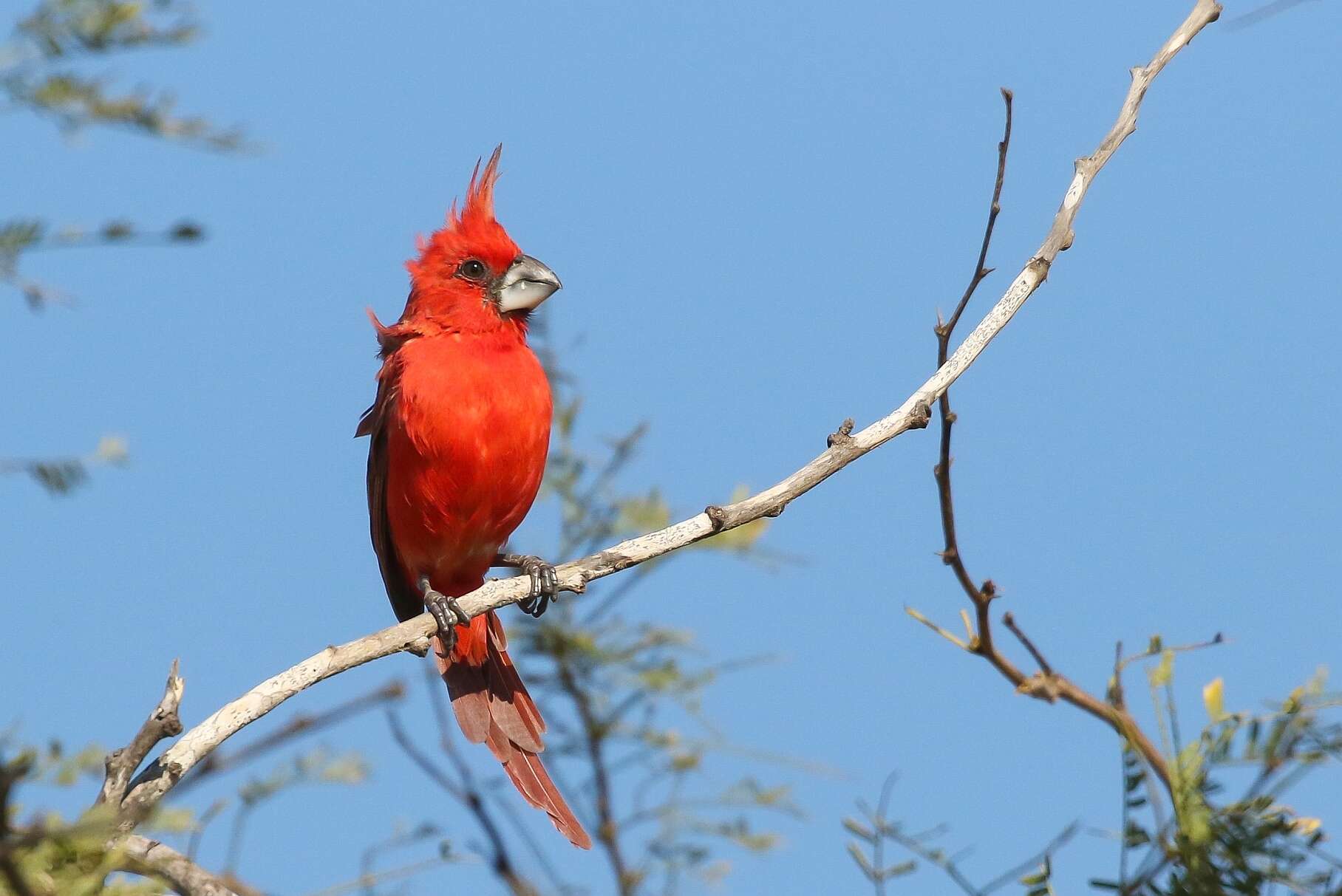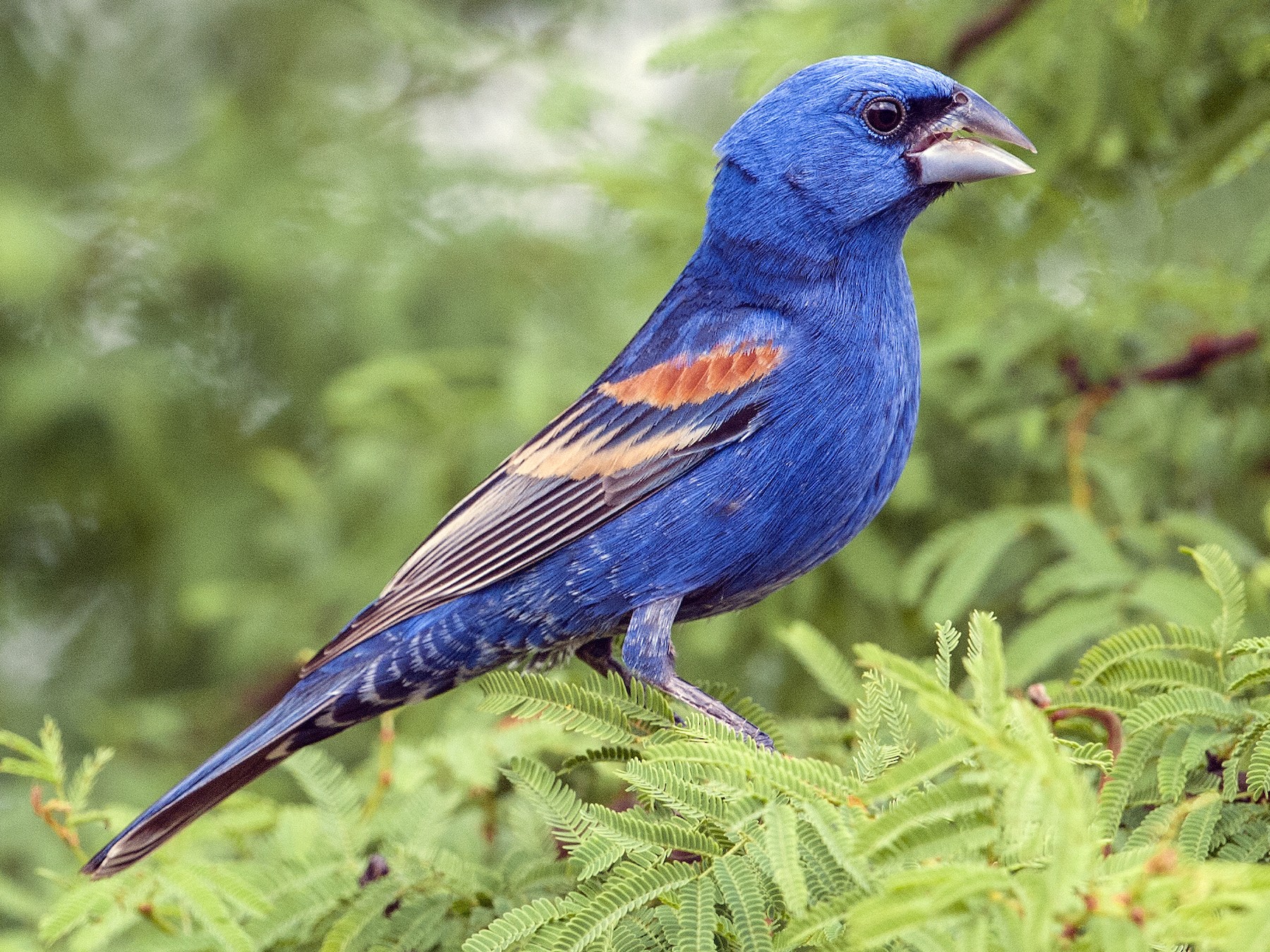Cardinals are a group of medium to large songbirds with stout features and thick bills. They are popular for their bright red, blue, and yellow plumage. However, defining “cardinal” is difficult as birds in the Cardinalidae family consist of more than just cardinals.
In fact, tanagers, grosbeaks, chats, seedeaters, and buntings are also members of the Cardinalidae family. For the sake of simplicity, this article will cover birds with the word “cardinal” in their name.
You are reading: Types Of Cardinal Birds With Pictures
In this article, we will discuss nine types of cardinal birds and learn about their habitats, distinguishing characteristics, diets, and nests. The Northern Cardinal is the most well-known bird in the Cardinalidae family and is a signature genus of the family.

9 Types Of Cardinal Birds With Pictures
Northern Cardinal (Cardinalis cardinalis)
The Northern Cardinal (Cardinalis cardinalis) is a bird in the Cardinalidae family and is known colloquially as the redbird, common cardinal, red cardinal, or just cardinal. It is a mid-sized perching songbird with a body length of 21–23 cm (8.3–9.1 in) and a crest on the top of the head.
The species expresses sexual dimorphism: females are a reddish olive color and have a gray mask around the beak, while males are a vibrant red color and have a black mask on the face, as well as a larger crest. Juvenile cardinals do not have the distinctive red-orange beak seen in adult birds until they are almost fully mature.
The Northern Cardinal is a fairly large, long-tailed songbird with a short, very thick bill and a prominent crest. It can be found in southeastern Canada, through the eastern United States from Maine to Minnesota to Texas, New Mexico, southern Arizona, southern California, and south through Mexico, Belize, and Guatemala.
It is also an introduced species in a few locations such as Bermuda and Hawaii. The male Northern Cardinal is perhaps responsible for getting more people to open up a field guide than any other bird. They’re a perfect combination of familiarity, conspicuousness, and style: a shade of red you can’t take your eyes off.
Even the brown females sport a sharp crest and warm red accents. Cardinals don’t migrate and they don’t molt into a dull plumage, so they’re still breathtaking in winter’s snowy backyards. In summer, their sweet whistles are one of the first sounds of the morning.
Pyrrhuloxia (Cardinalis sinuatus)

The Pyrrhuloxia (Cardinalis sinuatus) is a medium-sized songbird found in the American southwest and northern Mexico. Here are some key characteristics of the Pyrrhuloxia:
Appearance:
– Stocky, medium-sized songbird with tall crests and long tails
– Heavy but short seed-cracking bills with a curved culmen, or upper mandible
– Crisp gray and red plumage with a longer, elegant crest and a stubby, parrot-like yellow bill
Habitat:
– Inhabits arid habitats such as mesquite thickets and desert creek beds
– Habitat specialist found in desert scrub of the Southwest
Diet:
– Diet consists of seeds, fruits, and insects
– Snatches insects from trees and picks seeds predominantly from the stalks of grasses and similar plants
– Seeks out cactus fruit for consumption
– Assists in eating populations of cotton worms and weevils, making it a benefit to cotton fields
Reproduction:
– Fiercely and vocally territorial during breeding season
– Forages in huge flocks, sometimes numbering in the thousands, in the winter
The Pyrrhuloxia is closely related to the Northern Cardinal, but can be distinguished by its gray and red plumage, longer crest, and stubby, parrot-like yellow bill. It is a habitat specialist found in desert scrub of the Southwest and is a benefit to cotton fields due to its diet.
Vermilion Cardinal (Cardinalis phoeniceus)

The Vermilion Cardinal (Cardinalis phoeniceus) is a species of bird in the Cardinalidae family, also known as the cardinals or cardinal grosbeaks. Here are some key facts about the Vermilion Cardinal:
Appearance:
– A garish scarlet bird with a dramatic spiky crest and a hefty gray bill
– Males are overall brilliant red with a black chin, while females are brown with a gray head and elongated red feathers
Habitat:
– Found in Colombia and Venezuela
– Restricted distribution in northern Colombia and Venezuela
Diet:
– Diet consists of seeds, fruits, and insects
Conservation:
– The Vermilion Cardinal has a very large range and is not considered vulnerable
The Vermilion Cardinal is the most southerly member of the genus Cardinalis and is also the most shockingly red of the three species. It is monotypic and more closely related to the Pyrrhuloxia (C. sinuatus) than to the Northern Cardinal (C. cardinalis).
The Vermilion Cardinal is a restricted distribution species found in northern Colombia and Venezuela. It feeds on seeds, fruits, and insects. The Vermilion Cardinal is not considered vulnerable due to its very large range.
Rose-breasted Grosbeak (Pheucticus ludovicianus)
Read more : The Top 10 Largest Vultures In The World
The Rose-breasted Grosbeak (Pheucticus ludovicianus) is a large, seed-eating grosbeak in the Cardinalidae family. Here are some key facts about the Rose-breasted Grosbeak:
Appearance:
– Males have black heads, wings, backs, and tails, and a bright rose-colored patch on their white breast
– Females and immatures are streaked brown and white with a bold face pattern and enormous bill
– Stocky, medium-sized songbirds with very large triangular bills
Habitat:
– Found in deciduous woods, orchards, and groves
– Breeds mostly in open deciduous woods, sometimes in large shrubs
Diet:
– Diet consists of seeds, fruits, and insects
Behavior:
– Primarily a foliage gleaner
– Males and females exhibit marked sexual dimorphism
– Strongly migratory, with most birds wintering in Central and South America
– Both male and female Rose-breasted Grosbeaks share incubation, brooding, and feeding duties at the nest
The Rose-breasted Grosbeak is a striking bird with a black and white plumage and a bright rose-colored patch on the male’s white breast. It is a stocky, medium-sized songbird with a very large triangular bill.
The Rose-breasted Grosbeak is found in deciduous woods, orchards, and groves and breeds mostly in open deciduous woods, sometimes in large shrubs. It feeds on seeds, fruits, and insects and is primarily a foliage gleaner.
The Rose-breasted Grosbeak is strongly migratory, with most birds wintering in Central and South America. Both male and female Rose-breasted Grosbeaks share incubation, brooding, and feeding duties at the nest.
Black-headed Grosbeak (Pheucticus melanocephalus)
The Black-headed Grosbeak (Pheucticus melanocephalus) is a medium-sized, seed-eating bird in the Cardinalidae family. Here are some key facts about the Black-headed Grosbeak:
Appearance:
– Males are black and orange with a very thick bill, while females and immatures typically have an orangey wash
– A stocky bird with a very large bill that is conical and thick at the base
Habitat:
– Found in deciduous and mixed woods, mainly in oak woodland, streamside groves of cottonwood and willow, pine-oak woods in mountains, and pinyon-juniper woodland
Diet:
– Diet consists of seeds, fruits, and insects
– Eats insects that are considered pests, such as caterpillars, moths, and flies
Behavior:
– Diurnal animals, active in the daytime and resting at night
– Relatively aggressive towards conspecifics during the breeding season
– Occur in small, loose flocks outside of breeding season
– Nest parasite, cowbirds lay eggs in black-headed grosbeak nests, which are then raised by the grosbeak “parents”
The Black-headed Grosbeak is a stocky bird with a very large bill that is conical and thick at the base. It is found in deciduous and mixed woods, mainly in oak woodland, streamside groves of cottonwood and willow, pine-oak woods in mountains, and pinyon-juniper woodland.
The Black-headed Grosbeak feeds on seeds, fruits, and insects, including those that are considered pests. It is diurnal and relatively aggressive towards conspecifics during the breeding season, but occurs in small, loose flocks outside of breeding season.
The Black-headed Grosbeak is a nest parasite, with cowbirds laying eggs in their nests, which are then raised by the grosbeak “parents”.
Blue Grosbeak (Passerina caerulea)

The Blue Grosbeak (Passerina caerulea) is a medium-sized North American passerine bird in the Cardinalidae family. Here are some key facts about the Blue Grosbeak:
Appearance:
– Males are deep cobalt blue with rufous wingbars, while females are warm brown with rufous or buffy wingbars
– A stocky songbird with a very large, triangular bill that seems to cover the entire front of its face, from throat to forehead
Habitat:
– Found in brush, roadsides, and streamside thickets
– Breeds in dense low growth in semi-open country
– Expanding breeding range toward the north in recent decades
Diet:
– Diet consists of seeds, fruits, and insects
Behavior:
– Males sing a rich, warbling song from trees and roadside perches
– Occurs in small flocks outside of breeding season
– Breeds twice yearly, from April to August
The Blue Grosbeak is a stocky songbird with a very large, triangular bill that seems to cover the entire front of its face, from throat to forehead. It is found in brush, roadsides, and streamside thickets and breeds in dense low growth in semi-open country.
The Blue Grosbeak feeds on seeds, fruits, and insects. Males sing a rich, warbling song from trees and roadside perches and occur in small flocks outside of breeding season.
The Blue Grosbeak breeds twice yearly, from April to August. The Blue Grosbeak has been expanding its breeding range toward the north in recent decades.
Indigo Bunting (Passerina cyanea)
The Indigo Bunting (Passerina cyanea) is a small seed-eating bird in the Cardinalidae family. Here are some key facts about the Indigo Bunting:
Appearance:
– Males are entirely blue with a slightly darker head, while females are plain brown with a whitish throat, bluish tail, and faint streaks on the underparts
– A small bird with short, conical beaks and black or gray legs and feet
Habitat:
– Found in farmland, brush areas, and open woodland
– Breeds in brushy and weedy habitats along the edges of farmed land, woods, road, power lines, railways, and riparian habitats
Diet:
– Diet consists of seeds, fruits, and insects
Behavior:
– Migratory, ranging from southern Canada to northern Florida during the breeding season, and from southern Florida to northern South America during the winter
– Often migrates by night, using the stars to navigate
– Males establish and defend a territory during the breeding season
– Roosts in a flock at night during the winter, but spends the days foraging alone or in small groups
The Indigo Bunting is a small bird with short, conical beaks and black or gray legs and feet. It is found in farmland, brush areas, and open woodland and breeds in brushy and weedy habitats along the edges of farmed land, woods, road, power lines, railways, and riparian habitats.
The Indigo Bunting feeds on seeds, fruits, and insects. It is migratory, ranging from southern Canada to northern Florida during the breeding season, and from southern Florida to northern South America during the winter.
The Indigo Bunting often migrates by night, using the stars to navigate. Males establish and defend a territory during the breeding season, while during the winter, the Indigo Bunting roosts in a flock at night but spends the days foraging alone or in small groups.
Painted Bunting (Passerina ciris)
Read more : How To Keep Big Birds Away From Feeders?
The Painted Bunting (Passerina ciris) is a small, colorful bird in the Cardinalidae family, native to North America. Here are some key facts about the Painted Bunting:
Appearance:
– Males are one of the most colorful birds in North America, with a combination of rich blue head, bright red underparts, and green back, while females are a bright greenish-yellow with a blue-gray head and a faint green wash on the breast
– The bright plumage of the male only comes in the second year of life; in the first year, they can only be distinguished from the female by close inspection
Habitat:
– Found in shrubby thickets and along forest edges
– Breeds in semi-open areas with dense low growth, such as thickets, hedgerows, woodland clearings and edges, and undergrowth of open woods
– Winters in similar habitats in Florida, plus areas of scrub and second growth in the tropics
Diet:
– Diet consists of seeds, fruits, and insects
Behavior:
– Migratory, ranging from the southern United States to northern Mexico during the breeding season, and from Florida to Central America during the winter
– Males stake out and defend a territory during the breeding season
– Often secretive, staying low in dense cover
– Like other colorful species, such as the Red-masked Parakeet, Lear’s Macaw, and Banded Cotinga, the Painted Bunting is a popular cage bird and is heavily trapped on its wintering grounds, particularly in Mexico
The Painted Bunting is one of the most colorful birds in North America, with males having a combination of rich blue head, bright red underparts, and green back. It is found in shrubby thickets and along forest edges and breeds in semi-open areas with dense low growth, such as thickets, hedgerows, woodland clearings and edges, and undergrowth of open woods.
The Painted Bunting feeds on seeds, fruits, and insects. It is migratory, ranging from the southern United States to northern Mexico during the breeding season, and from Florida to Central America during the winter.
Males stake out and defend a territory during the breeding season, while the Painted Bunting is often secretive, staying low in dense cover. The Painted Bunting is a popular cage bird and is heavily trapped on its wintering grounds, particularly in Mexico.
Summer Tanager (Piranga rubra)
The Summer Tanager (Piranga rubra) is a medium-sized American songbird in the Cardinalidae family. Here are some key facts about the Summer Tanager:
Appearance:
– The male is completely red, while the female is variable in color, ranging from pale dull yellow to brighter orange
– A medium-sized, chunky songbird with a big body, large head, and large, thick, blunt-tipped bill
Habitat:
– Found in open woodlands, particularly of oaks and other deciduous trees
– Breeds in semi-open areas with dense low growth, such as thickets, hedgerows, woodland clearings and edges, and undergrowth of open woods
Diet:
– Diet consists mainly of insects, including bees and wasps, and also eats many beetles, cicadas, caterpillars, and grasshoppers, plus bugs, flies, and others; also eats some spiders
Behavior:
– Migratory, ranging from southern Canada to northern South America during the breeding season, and from Mexico to northern South America during the winter
– Males establish and defend a territory during the breeding season
– The Summer Tanager is a bee and wasp specialist, catching these insects in flight and killing them by beating them against a branch
– The Summer Tanager is often hard to see in the tops of leafy green trees, but can be found by listening for its robin-like song and its distinctive, muttering pit-ti-tuck call note
The Summer Tanager is a medium-sized, chunky songbird with a big body, large head, and large, thick, blunt-tipped bill. It is found in open woodlands, particularly of oaks and other deciduous trees, and breeds in semi-open areas with dense low growth, such as thickets, hedgerows, woodland clearings and edges, and undergrowth of open woods.
The Summer Tanager feeds mainly on insects, including bees and wasps, and also eats many beetles, cicadas, caterpillars, and grasshoppers, plus bugs, flies, and others; also eats some spiders.
It is migratory, ranging from southern Canada to northern South America during the breeding season, and from Mexico to northern South America during the winter.
Males establish and defend a territory during the breeding season, while the Summer Tanager is often hard to see in the tops of leafy green trees, but can be found by listening for its robin-like song and its distinctive, muttering pit-ti-tuck call note.
FAQS
1. What is a cardinal bird?
A cardinal bird is a medium-sized, thick-billed songbird of the New World, many with crested heads. They are known for their bright plumage, with males typically being red and females being more subdued in color.
2. What are the different types of cardinal birds?
There are several different types of cardinal birds, including the Northern Cardinal, Pyrrhuloxia, Vermilion Cardinal, Rose-breasted Grosbeak, Black-headed Grosbeak, Blue Grosbeak, Indigo Bunting, Summer Tanager, and Painted Bunting.
3. Where can I find cardinal birds?
Cardinal birds can be found throughout North and South America, depending on the species. They are often found in open woodlands, brush areas, and along forest edges.
4. What do cardinal birds eat?
Cardinal birds are omnivores and eat a variety of foods, including seeds, fruits, and insects.
5. Are cardinal birds migratory?
Some species of cardinal birds are migratory, while others are permanent residents. The migratory species typically range from southern Canada to northern South America during the breeding season, and from Mexico to northern South America during the winter.
6. How can I attract cardinal birds to my backyard?
Cardinal birds are attracted to bird feeders that contain sunflower seeds, safflower seeds, and peanuts. They also like to nest in dense shrubs and bushes, so planting these in your yard can help attract them.
7. Are cardinal birds endangered?
Most species of cardinal birds are not considered endangered, but habitat loss and climate change are threats to their populations. Some species, such as the Painted Bunting, are of conservation concern due to habitat loss and trapping for the pet trade.
8. Can I keep a cardinal bird as a pet?
No, it is illegal to keep cardinal birds as pets in the United States. Cardinal birds are protected under the Migratory Bird Treaty Act, which prohibits the possession, sale, or purchase of migratory birds or their parts without a permit.
Source: https://petstutorial.com
Category: Birds










